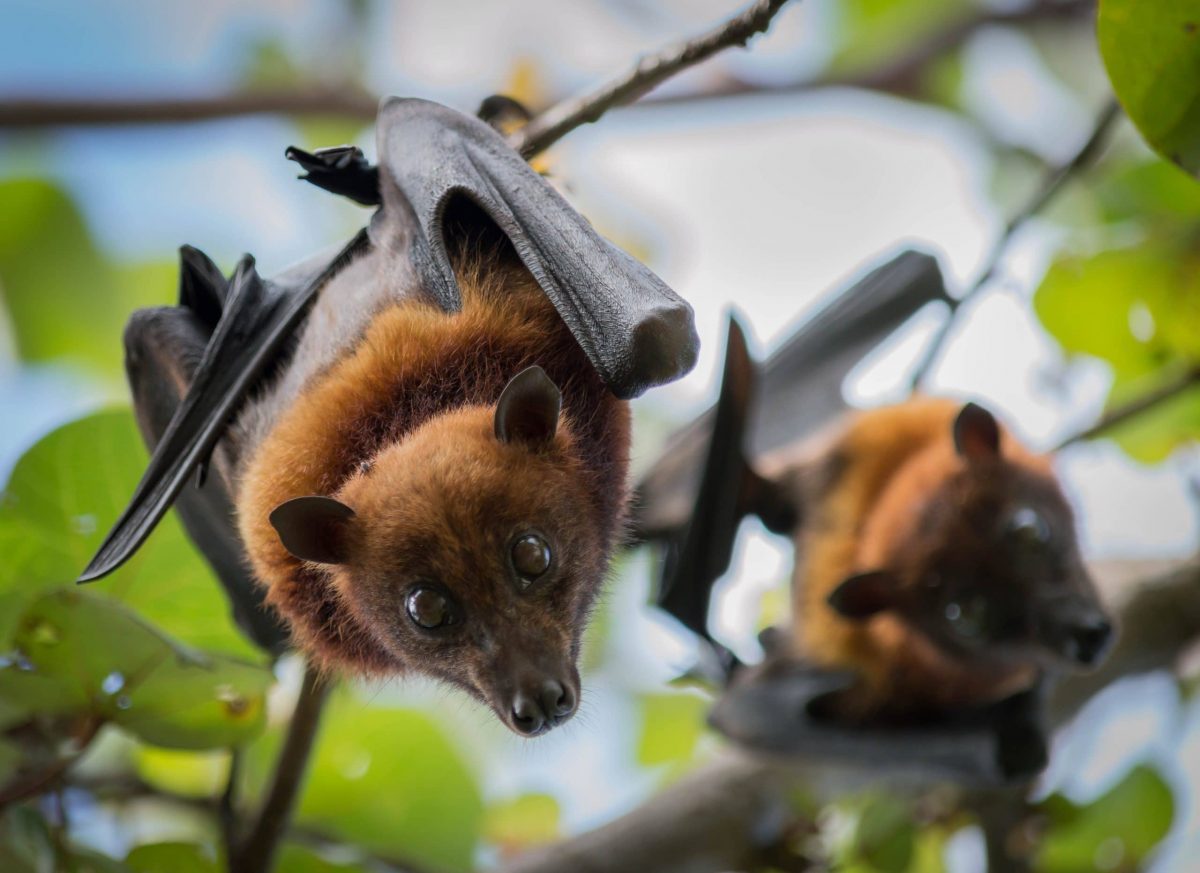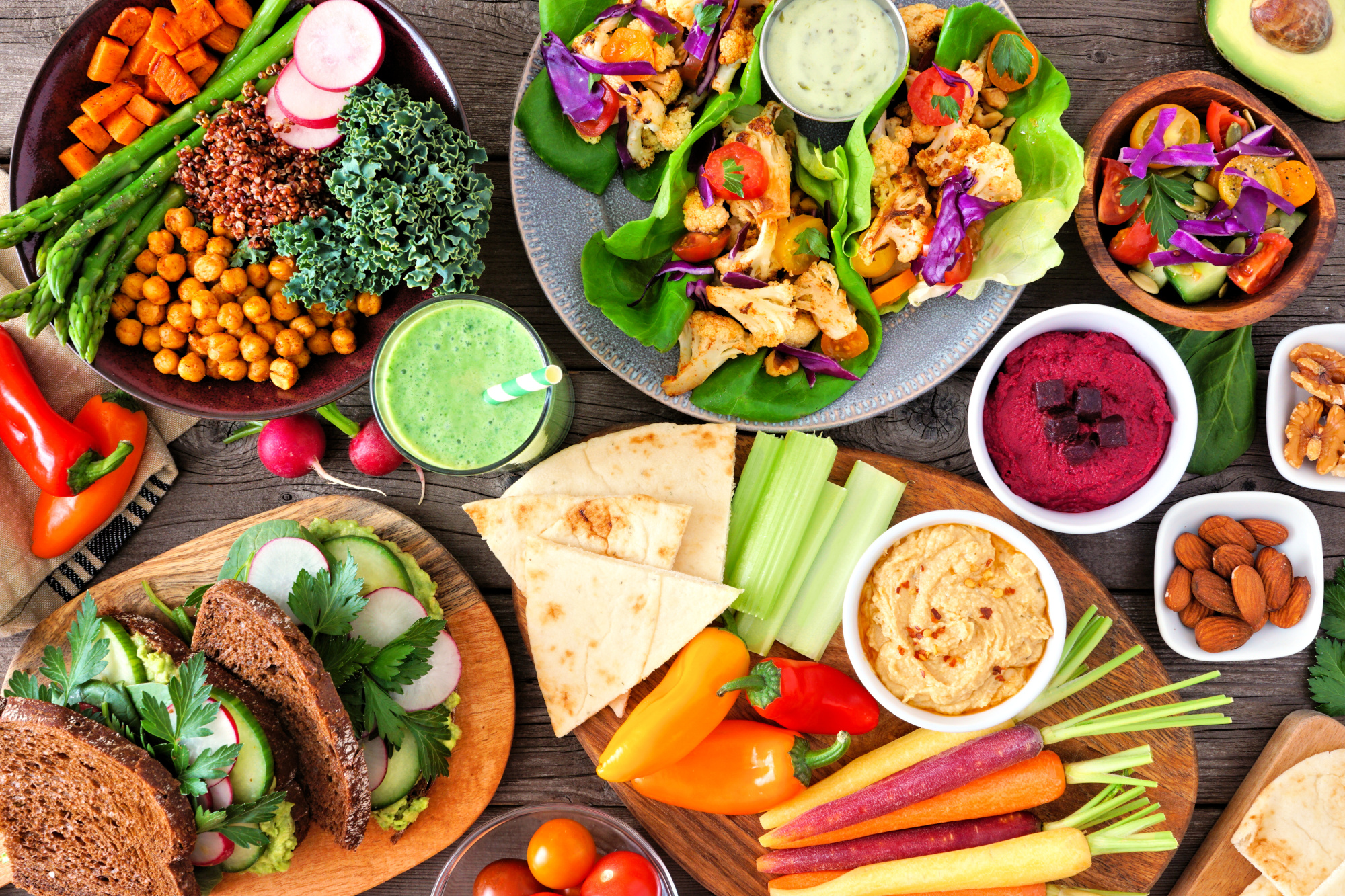There is compelling evidence that certain human activities strongly increase the likelihood of zoonotic diseases. In our previous blog we explored the first factor: the destruction of ecosystems and the loss of biodiversity (driven largely by animal agriculture), resulting in increased contact and virus spillover to humans and farmed animals. We’ll now take a closer look at the second factor: the use of wild animals for food, resulting in additional contact and virus spillover to humans and farmed animals.
WILD ANIMALS AS FOOD
One form of human intrusion into ecosystems and animals’ natural habitats is the use of wild animals as food in the context of hunting, wet markets, and bushmeat. Historically, the consumption of wild animals has been a component of the diets of many hunter-gatherer and forager cultures. Today, wild animals remain part of the diets of many communities around the world.1 At the same time, illegal wildlife trafficking has also become a big business that is worth up to US$ 23 billion.2 Every year, millions of wild animals are taken from their natural habitats – often illegally. In addition, various wild animal species are bred in unnatural, intensive farm settings.
Zoonotic Pandemics – Viruses, animals, and humans in a globalised world
In today’s globalised world, the risk of future zoonotic outbreaks and the severity of their impacts increase with a surge in demand for animal-based products.
Wild-animal exploitation – endangering biodiversity and driving zoonoses
The pangolin – probably involved in the emergence and spread of COVID-193 – is one example of an animal that is consumed as both meat and as medicine. Two out of the four Asian species are classified as ‘critically endangered’ and the other two as ‘endangered’.4 Pangolins are believed to be the world’s most trafficked mammal, accounting for a large part of all illegal wildlife trade and imported illegally into various countries on a massive scale.5 About a million pangolins are assumed to have been killed over the course of the last decade. However, the actual amount might be much higher as only a small portion of illegal trade is intercepted.6 7 8 There are estimates that close to 2.7 million pangolins are poached every year, in central Africa alone.9 Beyond pangolins, there is a wide range of wild animals and products from wild animals that are illegally traded – from bats to tigers to elephants. This makes the human exploitation of wild animals an additional risk factor for endangering biodiversity and already highly vulnerable species. Crucially, it also drives the emergence of zoonoses – through both aggravating the general environmental conditions (see 2.1) and creating direct gateways.
Wild-animal processing – a gateway for novel pathogens
When handling, slaughtering, or eating wild animals, viruses present in the animals can jump the species barrier. If humans are exposed to the virus, it can be transferred via compromised skin tissue or the mucosal membranes of the mouth, nose, or eyes, potentially allowing for the emergence of novel zoonotic infections.
Beyond Wuhan, pangolins and COVID-19
Regardless of whether the spillover of SARS-CoV-2 to humans actually occurred at the wet market in Wuhan, and irrespective of the exact animal species involved (see 1.5), the wild animal trade nevertheless poses a major risk for the emergence of zoonotic pathogens. It enables the supply of wild meat to urban consumers, leading to an increased movement of species and thus increasing the likelihood of zoonotic pathogen spread and exposure. This presents a major health risk to human populations worldwide.10 Wildlife has been identified as a source of high-impact, recently emerging zoonoses. Such pathogens include the Ebola and Marburg viruses, HIV, Nipah, Hendra, the Menangle virus, the West Nile virus, and others such as the coronaviruses which caused the global pandemics of SARS and MERS and, of course, various strains of influenza A.11 Theoretically, just one human being handling just one animal carrying a virus might suffice for animal-human transmission to occur – and to set in motion a disastrous process such as the one the world is currently experiencing.
The emergence of HIV – another food-related disaster
An example of how using wild animals for food can lead to the global spread of a dangerous pathogen is the emergence of the human immunodeficiency virus (HIV), which leads to acquired immunodeficiency syndrome (AIDS) in humans. While the virus and the disease are well known to the general public, its food-related origin is not. To date, HIV has infected about 75 million people, claimed more than 32 million lives, and continues to newly infect about 1.7 million people each year, despite extensive awareness campaigns.12 AIDS is a disease for which, almost 40 years after its first clinical report, there still is neither a cure nor a vaccine, but only lifelong treatment measures to keep it at bay. The multistaged emergence of HIV-1 and HIV-2, the two subtypes, is highly complex. However, it is now widely accepted that both types of HIV are the result of multiple cross-species transmissions of simian immunodeficiency viruses (SIVs), a virus that naturally occurs in African primates.13
Bushmeat and AIDS
The emergence of HIV can be traced back to Kinshasa in 1959, a time when urban populations in central Africa were expanding and logging operations had started to advance deep into the rainforest.14 Because roads provided access to remote forests, they enabled a growing bushmeat trade between hunters and urban centres. The hunting and butchering of nonhuman primates, an integral element of traditional livelihoods for many people in the region, has been identified as a high-risk behaviour. It is viewed as a likely source for the repeated transmission of SIVs to humans, which eventually led to the virus’s ability to spread from human to human.15 This is not a problem of the past. With expanding human populations in many economically deprived regions, the bushmeat trade has continued to expand and has been increasingly commercialised. It is now estimated to total as much as 3.4 million tons of wild meat per year, in Africa alone.16 The Food and Agriculture Organization of the United Nations (FAO) has named unsustainable bushmeat consumption in West and Central Africa as one of the region’s most important biodiversity and conservation challenges.17 18
Humans as threat multipliers
The overall outlook is highly alarming for two reasons: first, wild animals carry a great diversity of as yet unknown viruses; second, humans are increasingly interfering with wild animals’ natural habitats and using them for commercial purposes such as food, medicine, and fashion. Of course, the solution to reducing the risk of zoonoses is not the eradication of wild animals as carriers of viruses, but the preservation of their natural habitats and ending their use as food items. The single most culpable species for the emergence of pandemics is us: Homo sapiens has become a super vector – a threat multiplier – for zoonotic pandemics.19 Increasing conservation efforts and empowering local communities to find alternative sources of food and income is crucial to preventing new pathogens emerging from the depths of complex ecosystems. Given the potential global risks, this is a task not only for local governments but – crucially – also for the global community.
Banning wildlife markets – and the elephant in the room
In the wake of the coronavirus pandemic, the UN has urged for a ban on the trade of live wild animals at wet markets as a preventive measure for future pandemics.20 While banning the trade of wild animals – not only for food but also for other uses such as fur and medicine21 – may be a reasonable step, the risk of emerging viral diseases largely remains. This is due to the fact that many pathogens of recent concern to human health originate in, or are transferred to humans from, domesticated animals farmed for human consumption.22
Food & Pandemics Report
By exploring the crucial connection between the current crisis and our animal-based food system, the ProVeg Food & Pandemics Report highlights how our food choices help to create a recipe for zoonotic pandemics.
References
- Bharucha, Z. & J. Pretty (2010): The roles and values of wild foods in agricultural systems. Philosophical Transactions of the Royal Society B: Biological Sciences 365(1554), 2913–2926. doi:10.1098/rstb.2010.0123
- Nellemann, C., R. Henriksen, A. Kreilhuber, et al. (2016): The Rise of Environmental Crime – A Growing Threat To Natural Resources Peace, Development And Security. A UNEP-INTERPOL Rapid Response Assessment. United Nations Environment Programme and RHIPTO Rapid Response–Norwegian Center for Global Analyses p. 7
- Lam, T. T.-Y., M. H.-H. Shum, H.-C. Zhu, et al. (2020): Identifying SARS-CoV-2 related coronaviruses in Malayan pangolins. Nature. Nature Publishing Group p.1–6 doi:10.1038/s41586-020-2169-0
- UNODC (2016): World wildlife crime report: trafficking in protected species. p. 66. Available at: https://www.unodc.org/documents/data-and-analysis/wildlife/World_Wildlife_ Crime_Report_2016_final.pdf [Accessed: 28.06.2020]
- IUCN (2014): Eating pangolins to extinction. IUCN. Available at https://www.iucn.org/content/eating-pangolins-extinction. [Accessed: 28.4.2020]
- Challender, D. W. S., S. Heinrich, C. R. Shepherd, et al. (2020): Chapter 16 – International trade and trafficking in pangolins, 1900–2019. in Pangolins. (eds. Challender, D. W. S., Nash, H. C. & Waterman, C.) Academic Press, 259–276. doi:10.1016/B978-0-12-815507-3.00016-2
- IUCN (2014): Eating pangolins to extinction. Available at: https://www.iucn.org/content/eating-pangolins-extinction [Accessed: 28.06.2020]
- Heinrich, S., T. A.Wittman, J.V. Ross, et al. (2017). The Global Trafficking of Pangolins: A comprehensive summary of seizures and trafficking routes from 2010–2015. TRAFFIC, Southeast Asia Regional Office, Petaling Jaya, Selangor, Malaysi
- Ingram, D. J., L. Coad, K. A. Abernethy, et al. (2018): Assessing Africa-Wide Pangolin Exploitation by Scaling Local Data. Conservation Letters 11(2), e12389. doi:10.1111/conl.12389
- Cantlay, J. C., D. J. Ingram & A. L. Meredith (2017): A Review of Zoonotic Infection Risks Associated with the Wild Meat Trade in Malaysia. EcoHealth 14(2), 361–388. doi:10.1007/s10393-017-1229-x
- Cunningham, A. A., P. Daszak & J. L. N. Wood (2017): One Health, emerging infectious diseases and wildlife: two decades of progress? Philosophical Transactions of the Royal Society B: Biological Sciences 372(1725), Royal Society, 20160167. doi:10.1098/rstb.2016.0167
- Avert (2020): Global HIV and AIDS statistics. Avert. Available at https://www.avert.org/global-hiv-and-aids-statistics. [Accessed: 5.12.2020]
- Sharp, P. M. & B. H. Hahn (2011): Origins of HIV and the AIDS Pandemic. Cold Spring Harbor Perspectives in Medicine 1(1), a006841–a006841. doi:10.1101/cshperspect.a006841
- Worobey, M., M. Gemmel, D. E. Teuwen, et al. (2008): Direct evidence of extensive diversity of HIV-1 in Kinshasa by 1960. Nature 455(7213), 661–664. doi:10.1038/nature07390
- Wolfe, N. D., P. Daszak, A. M. Kilpatrick, et al. (2005): Bushmeat Hunting, Deforestation, and Prediction of Zoonotic Disease. Emerging Infectious Diseases 11(12), 1822–1827. doi:10.3201/eid1112.040789
- Parliamentary Office of Science and Technology (2005): The Bushmeat Trade. Available at https://www.researchgate.net/publication/303446603_The_bushmeat_trade
- Lindsey, P., Balme, G., Becker, M.,, et al. (2015): Illegal hunting and the bush-meat trade in savanna Africa: drivers, impacts and solutions to address the problem. FAO, Panthera, Zoological Society of London, Wildlife Conservation Society report, New York
- Lindsey, P., Taylor, W.A., Nyirenda, V.,, et al. (2015): Bushmeat, wildlife-based economies, food security and conservation: Insights into the ecological and social impacts of the bushmeat trade in African savannahs. FAO, Panthera, Zoological Society of London, SULi Report, Harare, Zimbabwe
- Settele, J., S. Diaz, E. Brondizio & P. Daszak (2020): IPBES Guest Article: COVID-19 Stimulus Measures Must Save Lives, Protect Livelihoods, and Safeguard Nature to Reduce the Risk of Future Pandemics. IPBES. Available at https://ipbes.net/covid19stimulus. [Accessed: 20.5.2020]
- Carrington, D. (2020): Coronavirus: ‘Nature is sending us a message,’ says UN environment chief. The Guardian. Available at https://www.theguardian.com/world/2020/mar/25/coronavirus-nature-is-sending-us-a-message-says-un-environment-chief. [Accessed: 30.3.2020]
- Geisler, A. & M. Schneider (2020): Virologe Christian Drosten: “Wir haben in Deutschland einige Vorteile gegenüber anderen Ländern“. Stern. Available at https://www.stern.de/gesundheit/virologe-christian-drosten—wir-haben-in-deutschland-einige-vorteile-gegenueber-anderen-laendern–9190450.html. [Accessed: 26.3.2020]
- Leibler, J. H., J. Otte, D. Roland-Holst, et al. (2009): Industrial Food Animal Production and Global Health Risks: Exploring the Ecosystems and Economics of Avian Influenza. EcoHealth 6(1), 58–70. doi:10.1007/s10393-009-0226-0










